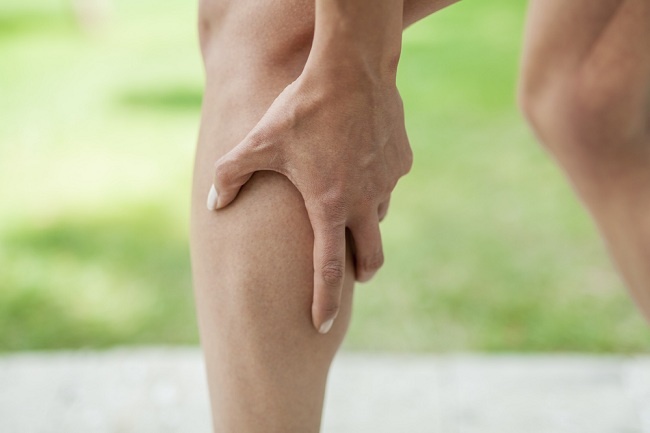A shoulder dislocation is a condition when the top of the arm bone detaches from the shoulder joint. The shoulder joint is the most easily dislocated joint, because it can be moved in various directions and the cavity in this joint is a shallow cavity.
Although it can be dislodged backwards or downwards, the forearm bone is more often detached forward (anterior shoulder dislocation). This condition generally occurs when a person throws objects or holds the body when falling.

Shoulder dislocation can happen to anyone, but this condition is more prone to be experienced by the elderly, men under 30 years old, and people with joint disorders that are too flexible.
Shoulder Dislocation Symptoms
Shoulder dislocation will show signs such as:
- Change in the shape of the shoulder. Shoulders that usually look round, look more boxy.
- There is a bulge near the shoulder.
- The arm is not in the position it should be.
- Swelling and bruising around the shoulder.
A person who has a dislocated shoulder will experience shoulder pain and difficulty moving the arm. The muscles around the shoulders also feel tense, or there is numbness from the neck to the fingers. Call your doctor immediately if you experience these symptoms.
Causes of Shoulder Dislocation
Shoulder dislocations are caused by injuries to the shoulder, including:
- Sport. The types of sports that often cause shoulder dislocations are soccer, volleyball, and gymnastics.
- Ktraffic accident. One example is a motorcycle accident, which can cause a hard impact on the shoulder.
- Fall down. When you fall, your hands will reflex to hold your body. This can lead to shoulder dislocation.
- Electrocution.When electrocuted, the arm muscles can make uncontrollable movements that can cause the arm bones to slide out of place.
Shoulder Dislocation Diagnosis
First of all, the doctor will ask the event that caused the upper arm bone to detach. After that, the doctor will perform a physical examination. The doctor will also take X-rays of the patient's shoulder to see how far the shoulder joint is detached, and detect damage to the surrounding tissue.
Shoulder Dislocation Treatment
In mild shoulder dislocation, the patient will be advised to perform treatment independently at home. The goal is to relieve pain and speed up the recovery process for a dislocated shoulder. This self-care includes:
- Shoulder compress. Compressing the shoulder with ice wrapped in a towel can reduce swelling and pain. Do it for 15-20 minutes, 3-4 times a day. After the pain and swelling subside, use a towel soaked in warm water to compress. Warm compresses are useful for relaxing tense muscles. Do a warm compress for 20 minutes.
- Rest your shoulders. Do not lift heavy weights and raise your arms, until the condition of the shoulders improves. Also avoid doing movements that previously caused a shoulder dislocation, as well as movements that make pain.
- Ktake reliever medication painful. Pain relievers, such as paracetamol, can help reduce pain. Follow the instructions for using the medication, and stop taking the medication once the pain subsides.
In severe shoulder dislocation, doctors will perform further treatment, including:
- Support device installation. The doctor will attach a special support so that the patient's shoulder cannot be moved. The duration of the support depends on the condition of the injured shoulder, it can be only a few days or up to 3 weeks. However, complete recovery can take 3-4 months.
- Reshoulder position (closed reduction). The doctor will restore the patient's displaced or detached upper arm bone to its original position. Before the procedure, the patient will be given muscle relaxants, sedatives, or anesthetics to reduce pain during the procedure. The pain will subside as soon as the upper arm bone returns to its position.
- Operation. Surgery is performed by an orthopedic doctor if the shoulder dislocation has occurred repeatedly and the supporting tissue around the shoulder is weak. Surgery aims to correct the position, as well as tighten the supporting tissue that is weak or torn. Patients also need surgery if they have damage to nerves or blood vessels. However, this rarely happens.
After the shoulder dislocation improves, the patient is recommended to undergo physiotherapy. The goals of physiotherapy in shoulder dislocations are to restore range of motion, strength, and stability of the shoulder joint. That way, patients can return to their normal activities.
Shoulder Dislocation Complications
Shoulder dislocation can cause several complications, including:
- Damage to the tissues around the joints, such as muscles, the connective tissue between bones (ligaments), or the tissue that connects bones to muscles (tendons).
- Nerve or blood vessel damage.
- The shoulder becomes unstable and there is a risk of repeated dislocations.
- arthritis (arthritis) long-term or chronic.
Shoulder Dislocation Prevention
Shoulder dislocations can be prevented in a number of easy ways, including:
- Exercise regularly, to maintain the strength and flexibility of the joints and muscles of the shoulder.
- Wear protective equipment, when doing sports that involve physical contact, such as soccer.
- Be careful in do activity, so as not to fall or suffer an injury that poses a risk of dislocation of the shoulder.
Someone who has had a dislocated shoulder is more likely to dislocate the shoulder again. Therefore, undergo a physiotherapy program for shoulder dislocation as recommended by a medical rehabilitation doctor, to maintain shoulder stability and strength.









